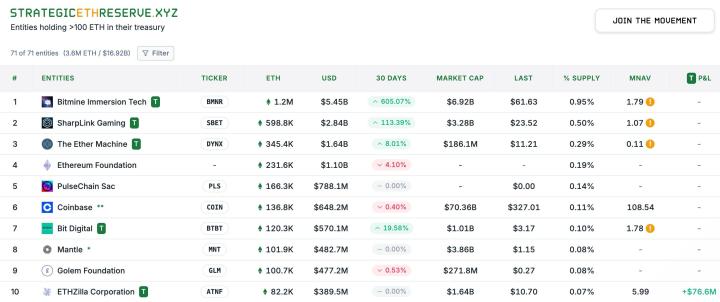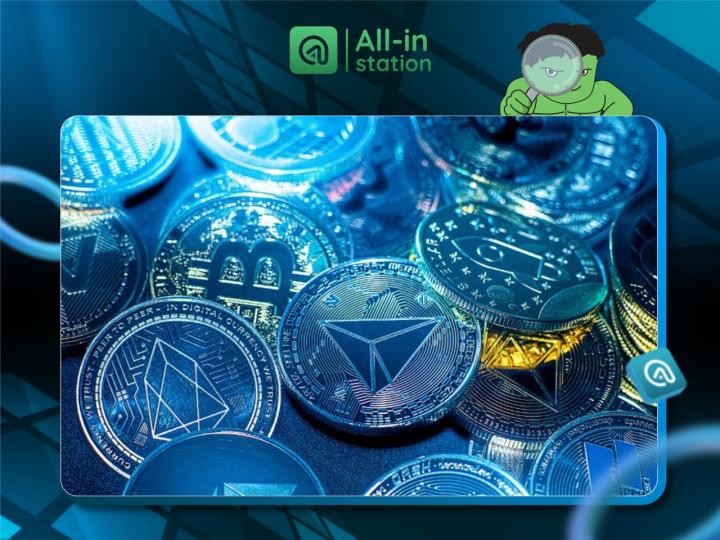Between traditional finance and the on-chain world, RWA (Real World Assets) is rapidly emerging as a narrative path with certainty, scalability, and real-world demand. With the continuous maturation of Ethereum and its Layer 2 network infrastructure, more and more real assets are moving on-chain, from high-net-worth bonds and consumer goods to real estate and commodity inventories, with attempts at on-chain expression, trading, and settlement entering the implementation stage.
2025 is becoming a critical turning point for RWA. This path of integration has moved from vision to practical application.
RWA: Why is the Crypto World Embracing the "Real" Again?
The crypto market is essentially an experimental restructuring of financial structures. Starting from stablecoins, RWA has been playing a role in stability and value mapping with an "off-chain anchored on-chain" approach. Today, after multiple cycles of pure on-chain narratives, real-world assets are once again in focus, with the underlying logic fundamentally changing:
RWA is no longer a concept subsidiary to stablecoins or bond products; it is becoming a complete on-chain asset narrative system.
From Experiment to Exponential Growth: RWA's Moment of Acceleration Has Arrived
The implementation of RWA is no longer a small-scale experimental exploration but is gradually forming a scalable trend. In the first half of 2025, the on-chain real asset market will break through $24 billion, nearly five times the $5 billion in 2022, becoming the second-largest crypto growth sector after stablecoins. This not only means market expansion but also marks a shift in industry confidence—more and more traditional institutions view RWA as an entry point into the on-chain world, rather than a subsidiary path.
This growth is the result of multiple factors working together:
- Institutional Formal Entry
- Dual Maturity of Compliance and Infrastructure
- Market's Thirst for Real Yield
According to industry speculation, by the early 2030s, 10% to 30% of global assets will be expressed on-chain, with the potential value released far exceeding the current entire crypto market by a hundredfold. Whether RWA can truly be "used" will be the key indicator of how far this transformation can go.
Ethereum Ecosystem Becomes the Main Battlefield for RWA
For RWA to truly land, it cannot be without a trustworthy on-chain infrastructure. The Ethereum ecosystem is gradually becoming the core stage of this transformation.
Ethereum mainnet, as a trust anchor, bears the function of recording core states such as identity, ownership, and settlement, ensuring data immutability and long-term availability; while Layer 2 provides an efficient execution environment, greatly reducing interaction costs, making it easier for real assets to enter small-amount, C-end, or even blockchain game scenarios, becoming an engine connecting the real economy with Web3.
More importantly, the continuous advancement of open standards in the Ethereum ecosystem (such as ERC-4626, ERC-3643, ERC-7765, etc.) is providing a unified asset language for RWA: expressing ownership while covering lifecycle stages, giving assets stronger composability and automation capabilities.
Under this architecture, the on-chain path of RWA is no longer limited to "rights confirmation" but moves towards "usability": assets can enter scenarios like DeFi, staking, claims, on-chain consumption, etc., achieving an on-chain experience of "using" rather than "storing". Rollup is building such a foundational layer with both economic efficiency and composability, truly bridging off-chain and on-chain assets.
Ethereum is not just the "soil" carrying RWA but the core stage where technology, liquidity, and standards collaboratively evolve in this chain transformation movement.
RareShop and Mint Blockchain's RWA Exploration with ERC-7765
As a Layer 2 focused on building next-generation on-chain asset protocols, Mint Blockchain is actively expanding the technical boundaries of the RWA field.
The innovative NFT asset protocol standard—ERC-7765—aims to break through the traditional limitation of NFTs representing only digital collectibles, deeply integrating NFTs with RWA. ERC-7765 not only inherits the basic functions of ERC-721 but also adds a "privilege exercise" mechanism, enabling NFT holders to directly execute rights related to physical assets on-chain, such as exchanging physical goods or enjoying specific services.
RareShop, as one of the first application platforms for ERC-7765, has created the world's first RWA NFT marketplace for consumers. This process achieves full-process on-chain management through ERC-7765, seamlessly integrating traditional e-commerce with blockchain technology, constructing a bridge between digital rights and real-world delivery.
ERC-7765 represents the cutting-edge exploration of deep integration between NFTs and the real world, marking an important milestone in Mint Blockchain's construction of the next-generation blockchain asset protocol ecosystem. As technology continues to mature, ERC-7765 and its ecosystem applications will accelerate the on-chain process of physical assets, helping to achieve seamless connection between on-chain and real-world economies.
Challenges Ahead and Future Outlook
Although real-world assets are gradually moving on-chain, their large-scale adoption still faces key challenges such as liquidity standards, which is also the direction of infrastructure construction for the entire industry in the next phase.
The good news is that Ethereum mainnet serves as a trust root, L2 networks represented by OP Stack provide a low-cost, composable environment, standard protocols continue to advance, and more and more C-end application scenarios (like RareShop) are building on-chain usage loops with real goods.
The competition in the next stage will no longer be about storytelling but about who can truly "use" assets.
Ethereum is the Starting Point, Not the Endpoint, of RWA
The landing of RWA is not a short-term trend but a long-term collaborative process between the on-chain world and the real world.
And all this is gradually taking shape in Ethereum and its L2 networks. It is not just a technological path but a co-evolution of financial systems, value expression, and social structures.
RWA is being implemented. The main battlefield is already beneath our feet.






